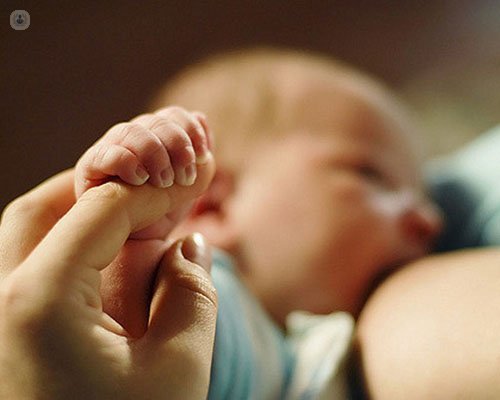puerperal mastitis: breast infection in infancy
Written by:It is called puerperal mastitis infection that breast tissue (glandular parenchyma cell tissue or lymph vessels) that occurs after childbirth, during breastfeeding.
The most common etiologic agents are:
- Staphylococcus aureus (50% cases)
- Streptococcus
- Pneumococcus
- Escherichia coli
Risk factors for mastitis puerperal
The most common risk factors include:
- Nipple abnormalities (inverted nipple, cracks, etc.)
- Dairy overload with consequent incomplete emptying
- Nasopharynx infection in the infant
- primiparity

Puerperal mastitis symptoms
Patients come to see when they have:
- 38-39 ° fever, chills, malaise.
- Local mastalgia and then generalized.
- Erythema, local heat, increased turgor.
- Intramammary mass or retromammary.
- Expulsion of purulent discharge from the nipple.
- Axillary lymphadenopathy.
Puerperal mastitis treatment
Treatment of puerperal mastitis must be carried out in different areas:
- antibiotic treatment. There are several antibiotics that can be used during lactation
- Antipyretics and antiinflammatory
- Hygiene measures: conduct a proper emptying of the breast and care cracks may occur in the patient in the nipple
- Sometimes lactobacilli we will complement treatment orally (eg in the case of recurrent mastitis).
Mastitis puerperal is not a contraindication to continue breastfeeding. In fact, it should encourage the patient to continue, since proper emptying of the breast is an important step in the treatment of mastitis pillar.
Possible complications of puerperal mastitis:
- Recurrent Mastitis: in a small percentage of cases, patients resubmitted another episode of puerperal mastitis, which means that mastitis has not been well treated or that we find risk factors for recurrence (bad position during lactation, rn. with alterations that prevent proper suction, etc.).
- Breast abscess: collection purulent drainage intramammary requiring surgery and sampling to adequate antibiotic treatment.
If you have any doubts , consult a specialist in Gynecology .



